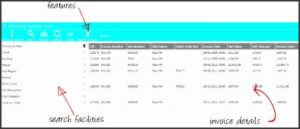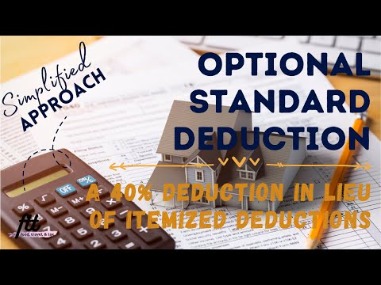07 dec What does closing a book mean in accounting?
Content

If you need help understanding these concepts, check out The Quick Guide to Accounting Terms & Abbreviations or talk to your accountant for more details. Your accountant can also assist you with running depreciation, or you can run depreciation yourself using accounting software programs, such as Xero and QuickBooks. Be sure to pay your contractors in full before you close your books and go through a payroll year-end checklist as well. It sounds like a lot now, but these key steps will help you gain control of your accounting and get you ready to ring in the new year. To make things even easier for you, we’ve also created a printable end-of-year accounting checklist so that you can mark your progress. Accounting is the process of recording, summarizing, and reporting financial transactions to oversight agencies, regulators, and the IRS.

We will debit the revenue accounts and credit the Income Summary account. The credit to income summary should equal the total revenue from the income statement. These account balances do not roll over into the next period after closing. The closing process reduces revenue, expense, and dividends account balances to zero so they are ready to receive data for the next accounting period. At month-end close, review your revenue and expense accounts to confirm they are accurate. Check to see if you recorded your expenses in the correct accounts for the period.
Automate your bookkeeping
If you’ve fallen behind on recording and categorizing your expenses, now is the time to catch up. Make sure all expenses are entered into your accounting software. Not only is this crucial for accurate record-keeping, but it will also help your accountant find all of the tax-deductible expenses your business qualifies for.
- Perform all reconciliationsReconcile all bank accounts to bank statements.
- This usually indicates a process problem that must be fixed.
- Gartner research finds that most fast-closing organizations had less than 40% of journal entries done manually .
- However, entrepreneurs must have basic knowledge of the process to ensure their business’s financial stability.
- If you have questions about your payroll taxes, make sure to speak with a tax professional.
Journal entries are records of business transactions within your accounting platform. Many companies use accounting software to automate the accounting cycle. This allows accountants to program cycle dates and receive automated reports. Enter a debit or credit in the opposite amount of the balance of the income summary account. Enter this number on the Retained Earnings report, labeled as ”Income Summary.” The accounting books are now closed. This amount is what you have left over after closing your books.
Step 4: Record all accrued expenses
One of the most important uses of your financial records is to help you comply with federal and state tax laws and prepare tax returns. A good bookkeeping system will help make dealing with Uncle Sam relatively painless. Add up all the transactions in each general ledger account. This gives you a preliminary ending balance for each account.
Meanwhile, automation in accounting can help you download and post orders to QuickBooks automatically or on a schedule. The preliminary trial balance should show your credits equal to your debits for a given period. For the trial balance to be balanced, total credits and debits will be the same.
Record and post your closing entries
In addition to identifying any errors, adjusting entries may be needed for revenue and expense matching when using accrual accounting. Generally accepted accounting principles require public companies to utilize accrual accounting for their financial statements, with rare exceptions. Expense accounts may include rent, salary, utilities, and advertising. You decrease expense accounts by crediting them and debiting Income Summary for the total of your expenses. Before you completely close the accounts at month-end, consider having a second set of eyes review your work. The person reviewing your accounting information could be a manager or supervisor who has experience handling your books.
- Starting from $99 and includes 3 months FREE Registered Agent services.
- The discipline from following a good monthly close process should prevent the need to edit transactions in prior months.
- It spots any inaccuracies in the financial accounts that need to be fixed and reduces human hours.
- There is a conflict when the additional documents do not match the data recorded in the general ledger.
- The ”books” related to the business are the revenue, spending, and income summary reports in accounting.
- Post the account totals from your cash payments and your sales and cash receipts journal to the appropriate general ledger account to close the books.
Financial statements can be generated once you have balanced your debits and credits. In a well run company, the decision makers must know how the business is performing by looking at the historical data. Historical data includes last month’s financials and even the trailing 12 months.
Step 14: Count Your Inventory
For others, a period that better aligns with business operations — such as ending the year after a period of heavy sales — may be more appropriate. Hopefully, Lori concludes, that warning will prevent changes. That means whatever you’ve submitted to your tax team will be the same as what’s in QuickBooks, so you’ve maintained consistency. Closing the Income Summary account—transferring the balance of the Income Summary account to the Retained Earnings account. Roll forward reports, commonly requested by auditors for each audit, have long been known for being…
Since Income Summary is a temporary account, that balance needs to be closed to Retained Earnings to track the company’s cumulative earnings. While most business owners focus on the Income Statement, errors accumulate over time on the Balance Sheet and it is equally important to keep the Balance Sheet accurate. Learn how accounting software https://quick-bookkeeping.net/how-to-calculate-self-employment-social-security/ can save you time and money with automation and insights. Use your accounting software to run a Profit & Loss report and Balance Sheet report. Analyze both reports and verify that the information you see is correct. If there are any discrepancies, talk to your accountant to get everything squared away before closing the books.
Adjustments are recorded as journal entries where necessary. Recordkeeping is essential for recording all types of transactions. Many companies will use point of sale technology linked with their books to record sales transactions. Beyond sales, there are also expenses that can come in many varieties. Depending on each company’s system, more or less technical automation may be utilized. Typically, bookkeeping will involve some technical support, but a bookkeeper may be required to intervene in the accounting cycle at various points.
- Review your Income Statement and Balance Sheet, looking for deviations from normal amounts in prior months, any unusual balances, missing items, or mistakes.
- When I asked the business owner how he knows what his margins are and how he can run his business, his response was he has a“gut feeling”.
- The accounting cycle records and analyzes accounting events related to a company’s activities.
- In a well run company, the decision makers must know how the business is performing by looking at the historical data.
- Once the debits and credits are balanced, it is time for you to add adjusting entries that are not included in daily transactions.
And, your calendar can help you avoid falling behind on your books. Chances are, you probably don’t have time to record transactions every day. If this is the case, make sure you write down your purchases and organize receipts.
Steps to Streamline Your Month End Close Process
These teams are using everything their accounting system has built in plus a few additional tools like FloQast. Bank reconciliations have to tie to balances on the closing date. Be sure to close the books again after you make your changes so no one else can inadvertently make changes to a closed period.
How long should it take to close year end books?
Each year, finance professionals bury their heads in the books to prepare their end-of-year accounts, statements, and financial reporting. It's estimated that the average accounting team takes 25 days to complete an annual close.
It could also lead to managers doing work that no one ever bills for. Sometimes people get so hyper-focused on the tracking Learn The Basics Of Closing Your Books piece that they tend to slip on some of the analysis. You might be able to get by with a spreadsheet in a few select cases.







